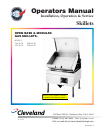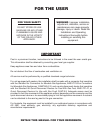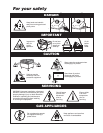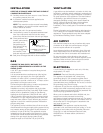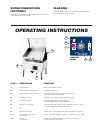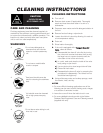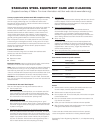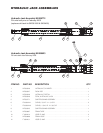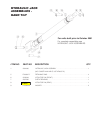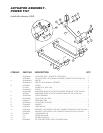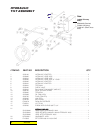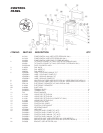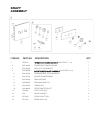
GENERAL
Installation of the unit must be accomplished by
qualified installation personnel working to all applicable
local and national codes. Improper installation of unit
could cause injury or damage.
This equipment is built to comply with applicable
standards for manufacturers. Included among those
approval agencies are: UL, A.G.A., NSF, ASME/N.Bd.,
CSA, CGA, ETL, and others. Many local codes exist,
and it is the responsibility of the owner/installer to
comply with these codes.
The rating plate is located directly behind the upper
front panel (left side). For easy access, remove the two
screws securing the upper front panel and hinge the
lower front panel downwards. Gas type, burner ratings
and electrical requirements are stated on the plate.
Observe all clearance requirements to provide proper
make-up air flow. Do not obstruct the flow of combustion
and ventilation air. Check rating plate to ensure that unit
has been equipped to operate with the type of gas
available at the installation.
All units are protected with fuses which are located
inside the service box. For easy access, hinge front
panel downwards.
A pressure tap is supplied with each unit and is
installed on the manifold. The gas pressure must be
checked when unit is installed, to ensure unit gas
pressure is the same as specified on the rating plate.
For access to the pressure tap, remove front panel, turn
power switch to the 'OFF' position as a precaution and
hinge front panel downwards. The pressure tap is
located behind the front shield. If necessary, pressure
adjustments can be made at the pressure regulator
which is installed on the manifold. For easy access to
the pressure regulator, view along left side of unit from
underneath. Once pressure test is completed, turn
power switch and thermostat to the 'OFF' position. Raise
lower front panel back into position.
Make certain that new piping, joints and connections
have been made in a clean manner and have been
purged, so that piping compound, chips, etc., will not
clog valves and/ or controls. Use pipe joint sealant that
is approved for use with liquefied petroleum gas.
Have a qualified gas technician check the gas pressure
to make certain that existing gas facilities (meter, piping;
etc.) will deliver the BTU's of gas required at the unit
with no more than 1/2" water column pressure drop.
When checking pressure, be certain that all the
equipment on the same gas line is turned to the 'ON'
position.
WARNING: Always check gas connections for leaks
using soap solution or similar means. DO NOT CHECK
WITH AN OPEN FLAME.
INSPECTION
Before unpacking visually inspect the unit for evidence
of damage during shipping.
If damage is noticed, do not unpack the unit, follow
shipping damage instructions.
SHIPPING DAMAGE
INSTRUCTIONS
If shipping damage to the unit is discovered or
suspected, observe the following guidelines in
preparing a shipping damage claim.
1. Write down a description of the damage or the
reason for suspecting damage as soon as it is
discovered. This will help in filling out the claim
forms later.
2. As soon as damage is discovered or suspected,
notify the carrier that delivered the shipment.
3. Arrange for the carrier's representative to examine
the damage.
4. Fill out all carrier claims forms and have the
examining carrier sign and date each form.
CLEARANCE
REQUIREMENTS/ DRAIN
LOCATIONS
This unit must be installed in accordance with the
clearances shown on the rating label which is adhered
to the unit.
FOR YOUR SAFETY. Keep the appliance area free and
clear of combustible materials.
VENTILATION
These units must be installed under an adequate
ventilation system.
INSTALLATION



